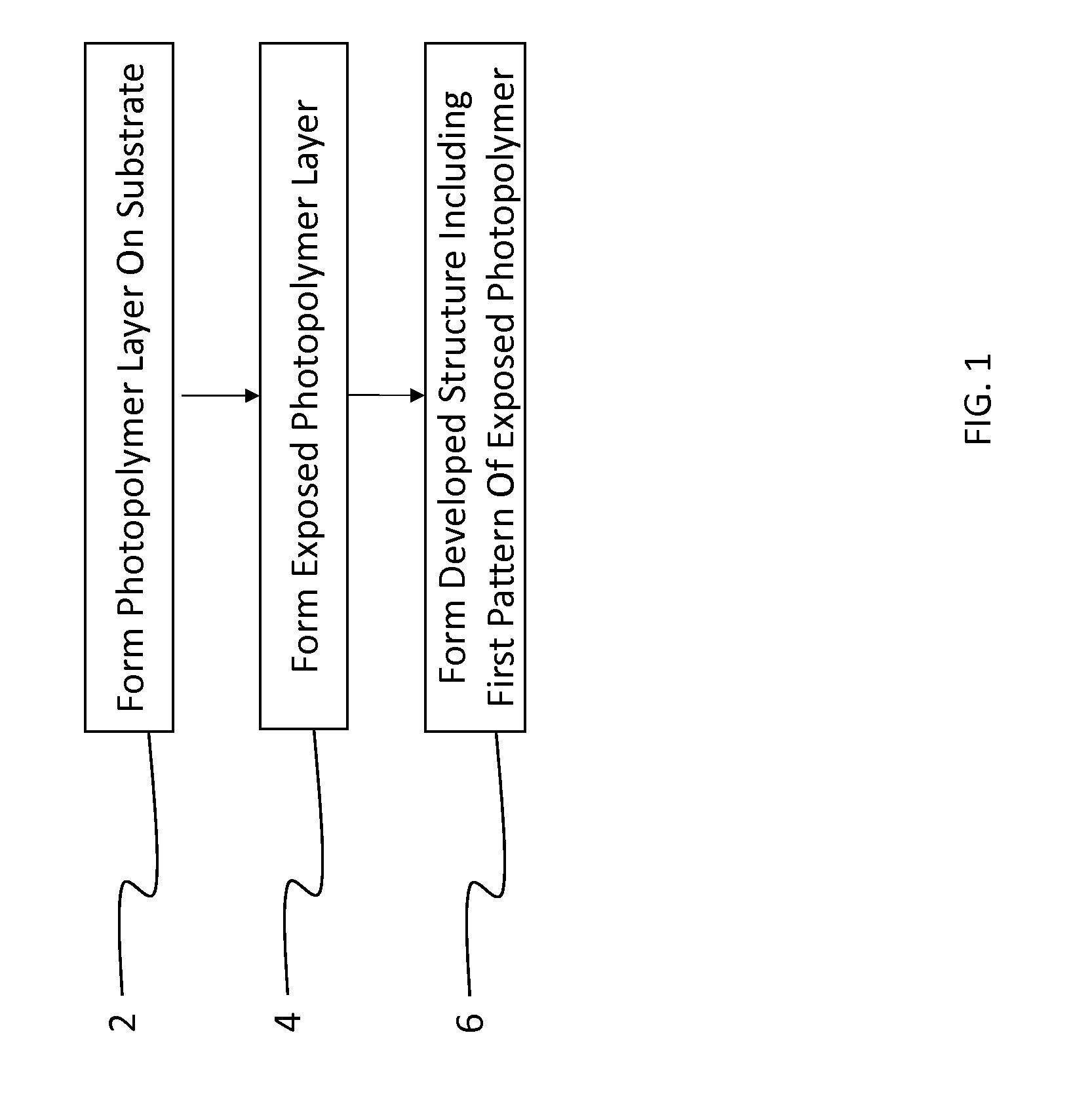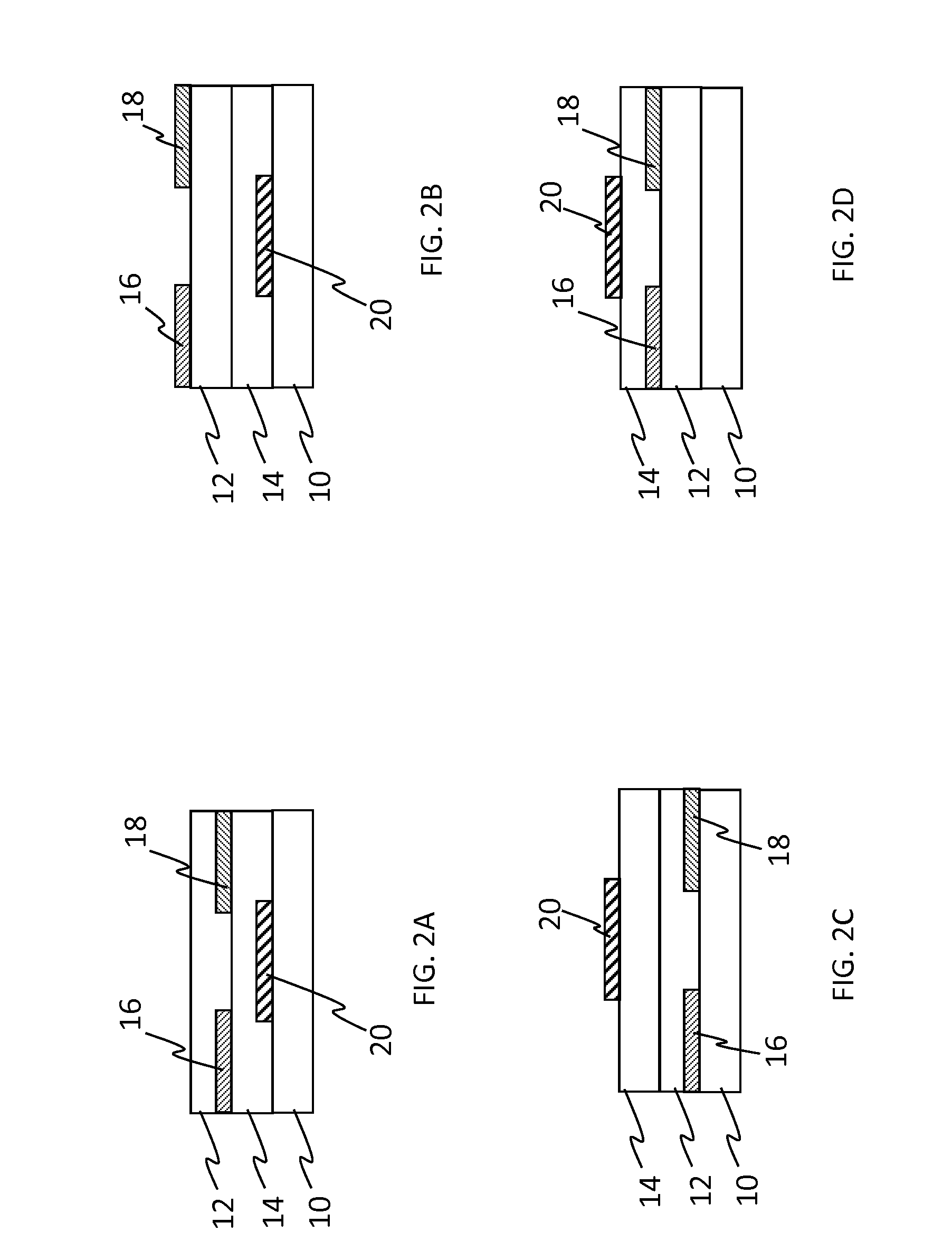Cross-linkable fluorinated photopolymer
- Summary
- Abstract
- Description
- Claims
- Application Information
AI Technical Summary
Benefits of technology
Problems solved by technology
Method used
Image
Examples
examples
Monomer Syntheses
[0117]Monomers used in the preparation of the photopolymers were obtained from commercial sources except for the following.
Preparation of TMJCMA (Compound (3-2) Above)
[0118]As a first intermediate in the preparation of monomer TMJCMA, 10,10,16,16-tetramethyl-4-oxo-3-oxa-13-azatetracyclo[7.7.1.02,7.013,17]heptadeca-1,5,7,9(17)-tetraene-5-carbonyl chloride was prepared as follows A stirred suspension of 10,10,16,16-tetramethyl-4-oxo-3-oxa-13-azatetracyclo[7.7.1.02,7.013,17]heptadeca-1,5,7,9(17)-tetraene-5-carboxylic acid (12.11 g, 35 mmol, prepared according to U.S. Pat. No. 4,736,032) and two drops of N,N-dimethylformamide in 80 mL of dichloromethane was treated under nitrogen with oxalyl chloride (4.95 g, 39 mmol). After 18 h, NMR analysis of the mixture indicated that the reaction was only partially complete. An additional 3.0 g of oxalyl chloride was added, and the mixture was heated at reflux for 4 h. Volatiles were removed in a stream of nitrogen, and the orange...
example 1
[0136]A mixture of 216.00 g (0.500 moles) FOMA, 18.20 g (0.128 moles) GMA, 4.863 g (0.0253 moles) 2-2′-azobis(2-methylbutyronitrile), and 3.60 g (0.013 moles) 9-anthracenemethanol methacrylate (“AMMA”) in 685 g HFE-7600 was stirred under nitrogen for 18 hours at 78° C., then cooled to room temperature The reaction contents were drained, and the residue rinsed out with 1058.6 g additional HFE-7600 in three portions. The combined solutions provided a solution of the photopolymer containing 12 w / w % solids. The FOMA / GMA / AMMA molar ratios were 78.0 / 20.0 / 2.0. Next, 1.0% by weight (relative to the copolymer) of photo-acid generator, CGI 1907 was added to the photopolymer solution. The solution was then filtered through a Mykrolis Optimizer filter with a pore size of 0.05 μm filter.
example 2
[0137]This example is like Example 1 except that the third monomer was “FOCMA”. In a manner analogous to Example 1, a photopolymer solution was prepared in HFE-7600 having 12 w / w % solids. The FOMA / GMA / FOCMA molar ratio was 78 / 20 / 2. Photo-acid generator CGI 1907 was added to the solution at a level of 1.0% by weight, relative to the copolymer.
PUM
| Property | Measurement | Unit |
|---|---|---|
| Fraction | aaaaa | aaaaa |
| Percent by mass | aaaaa | aaaaa |
| Percent by volume | aaaaa | aaaaa |
Abstract
Description
Claims
Application Information
 Login to view more
Login to view more - R&D Engineer
- R&D Manager
- IP Professional
- Industry Leading Data Capabilities
- Powerful AI technology
- Patent DNA Extraction
Browse by: Latest US Patents, China's latest patents, Technical Efficacy Thesaurus, Application Domain, Technology Topic.
© 2024 PatSnap. All rights reserved.Legal|Privacy policy|Modern Slavery Act Transparency Statement|Sitemap



